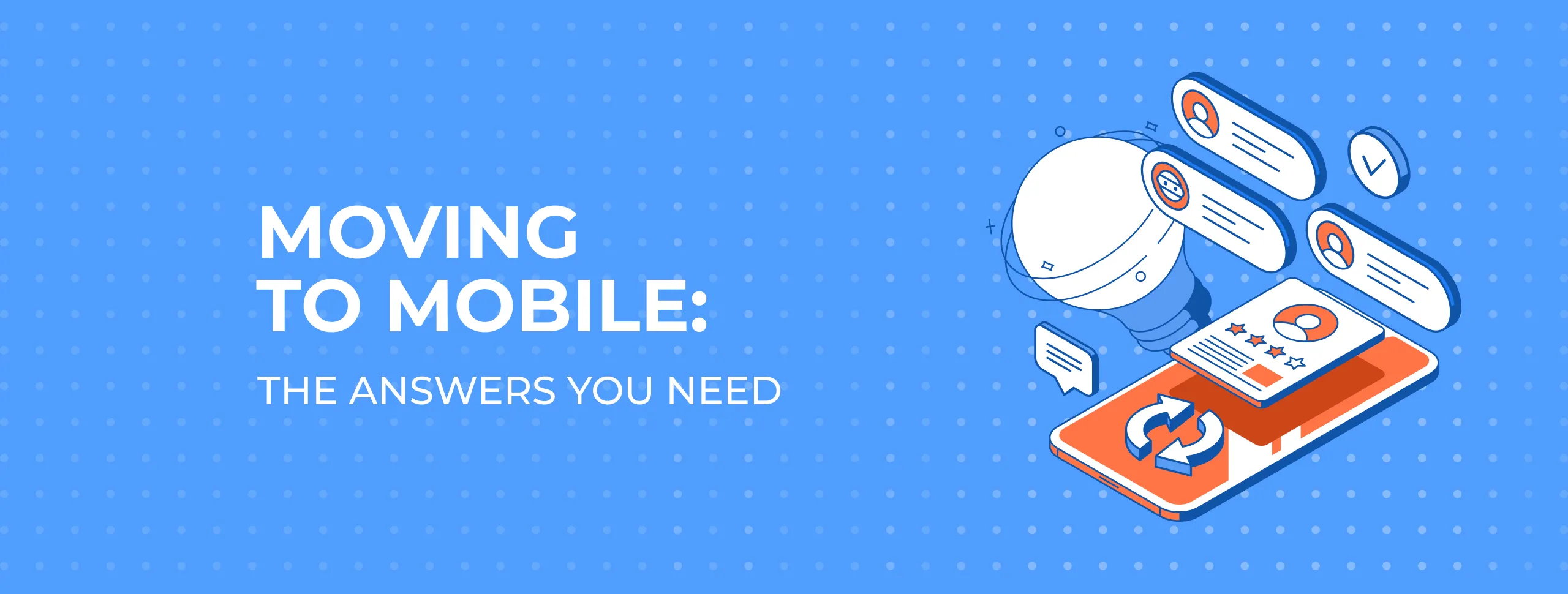
Moving to Mobile: The Answers you Need

Your business is evolving, and to stay connected with customers wherever they are, you're ready to harness the potential of mobile technology. With so many businesses embracing tablets and smartphones, it's time to go mobile and give your brand a digital boost. But where do you start?
If you're considering a mobile app, you've already made a smart choice. However, with the rapid pace of technological change, it can be challenging to know where to begin. In this guide, we'll help you navigate some essential considerations and set you on the right path to mobile success.
Which Platform Should I Choose?
In the world of mobile apps, choosing the right platform is critical. Two leading players dominate the market: iOS and Android. Each has distinct advantages, but developing for both platforms simultaneously may not always be feasible due to budget constraints. So, which one should you prioritize?
-
iOS (Apple’s Operating System): Known for its user-friendly design and a highly curated App Store, iOS apps often appeal to an audience with higher spending power. Apple enforces strict quality and security standards, giving users confidence in the apps they download. iOS apps also tend to have a longer lifespan, as Apple devices typically receive OS updates for several years.
-
Android (Google’s Operating System): Android provides a more flexible and open environment, which appeals to a broad, global audience. However, developing for Android can require additional resources, as the platform supports a wide range of devices and screen sizes. This can increase support and maintenance costs.
Which One Should You Choose? If resources allow, having a presence on both platforms is ideal. But if you need to pick one, think about your target audience, budget, and support capacity. iOS development can offer better data security and long-term user retention, while Android’s expansive reach can help you tap into a larger global market.
What Should My App Look Like?
An app’s design and functionality are key to its success. Users download apps for specific reasons—whether to solve a problem, streamline a process, or simply for entertainment. Successful apps focus on delivering value first and seamlessly guide users toward additional services.
Some design tips:
- Keep it intuitive: Simple, user-friendly navigation enhances the user experience and encourages engagement.
- Prioritize functionality: Ensure your app fulfills its primary purpose effectively, with easy access to additional features that support user needs.
- Maintain brand consistency: Use your brand’s colors, fonts, and messaging style to reinforce brand identity and build trust.
Can I Charge for My App?
Revenue models vary widely, so consider what makes the most sense for your audience and goals:
- Free Apps: Offering your app for free can help increase downloads quickly and build brand awareness.
- Paid Apps: Charging for downloads or add-ons can be profitable once your app gains recognition. Prices typically range from $0.99 to $4.99—comparable to a small daily expense.
- Freemium Model: This approach offers basic features for free, with the option to unlock premium content through in-app purchases.
- Subscription Model: Ideal for time-sensitive or frequently updated content, subscription models charge users regularly, ensuring continuous revenue and incentivizing users to stay engaged.
Whatever your pricing strategy, highlight your app’s value to keep users engaged and willing to invest in added features.
Ready to Start Building?
Understanding the fundamentals of mobile development is a great first step. Now, it’s time to start envisioning, discussing, and planning your app in detail. If you’re looking to dive deeper, explore more about mobile app strategies and trends [here].
Your mobile journey awaits!





